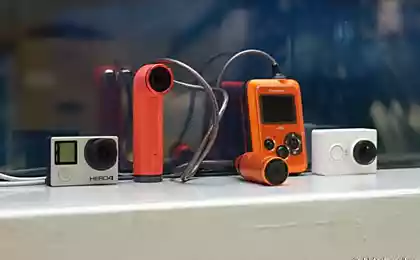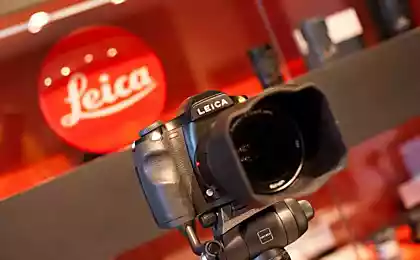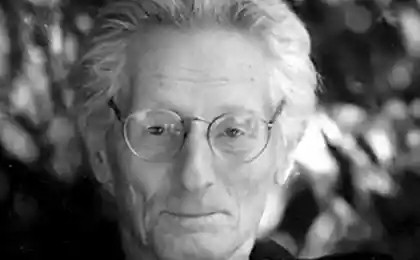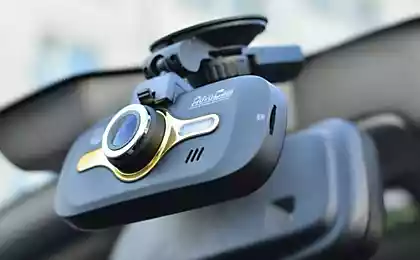647
How to build a 570-megapixel camera on
The world's largest device to search for dark matter will soon be ready. Construction chetyrёhtonnoy Dark Energy Camera worth $ 35 million will be completed in a month in the laboratory Fermilab in Illinois. There she is now tested by setting the mount of the telescope (mount assembly - on the video). A camera in full force working after installation on Victor Blanco telescope in the mountains of Chile, in October 2012.
11 photos via alizar
Participants of the project are going to measure the rate of 300 million galaxies in the southern hemisphere night sky, to test the theory of the existence of dark matter.
Photo report directly to the construction site.
Assembling the camera is carried out since 2008 by the 120 astronomers, engineers and physicists.
Image capture unit (imager) holds 74 individual sensor combined resolution of 570 MP.
1. To date, there is only one camera with more resolution: telescope Pan-STARRS 1400 MP who seeks approaching Earth hazardous asteroids. But the Dark Energy Camera is unmatched by weight. Only one image capturing unit weighs about 910 kg.
Both "competitors" can easily confound the construction of the planned Large Synoptic Survey Telescope 3,200 MT, which also will be engaged in the search for traces (effects) of dark matter. The only problem is that its construction is no money.
The photo technician checks an array of 74 CCD sensors. Twelve of these sensors have a lower resolution (a total of about 53 MB), they are needed for targeting and focus the telescope. The remaining 62 of the sensor (519 MB) directly take pictures of galaxies.
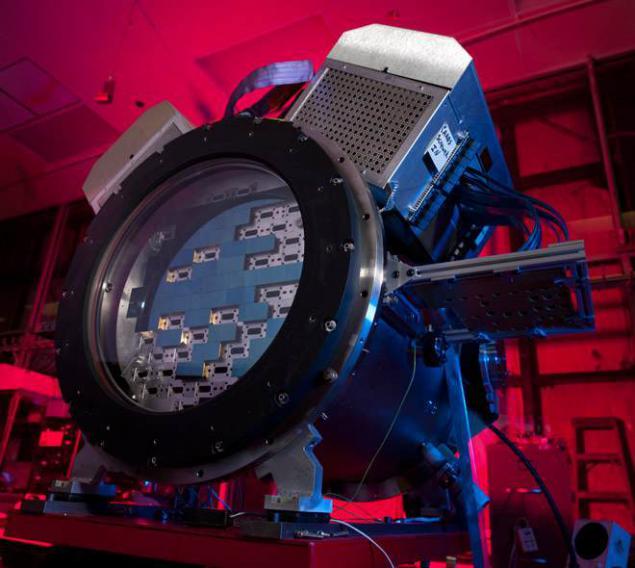
2. All non-serial CCD sensors and are made by special order in accordance with the required characteristics - that they are the most sensitive in the infrared range (which is supposed to remove the offset and distant galaxies).
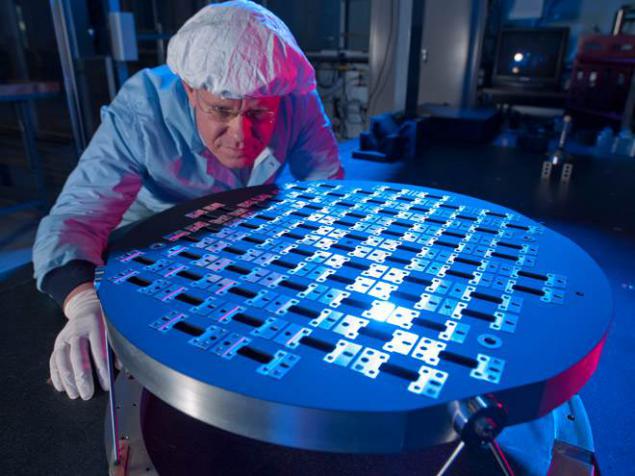
Approximately the image sensors give all together.
Every night, the camera will make about 400 full-size photos of each volume of 1 GB. From the substation in Chile, they will be immediately sent for processing and analysis in the National Supercomputer Center in Illinois (National Center for Supercomputer Applications in Illinois).
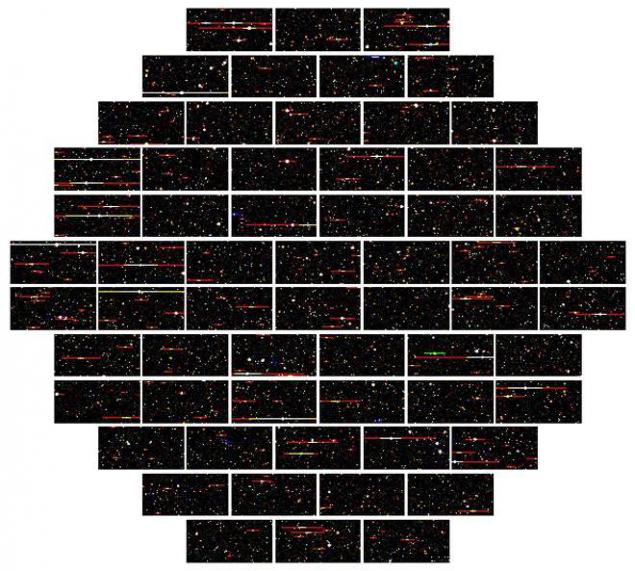
Heavy parts of the camera will not hang on the telescope. For them, the engineers built a separate 3, 4-meter-high "case." In the picture below you can see a block with sensors (on the left), the main focus optical system (right) and two of the six pnevmotrubok for aiming the camera.
4. Victor Blanco Telescope is located in one of the most advanced observatories in the southern hemisphere - the Inter-Tololo Observatory Cerro Chile. The diagram shows the scale of the telescope for two people (red circle) and position of the Dark Energy Camera (green circle).
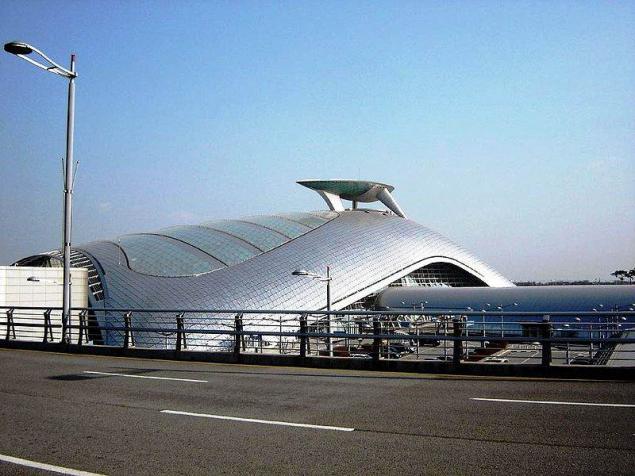
5. Details of the heaviest in the world camera inspire respect. Before contact with the sensor light passes through the four filter width of 61 cm. They filter the range of passing waves to the sensors did not fall on anything extra. The infrared sensors will do, in fact, black-and-white picture. Then, scientists, artists will paint it realistically in different colors, using scientific methods (they are specifically calculated, what color is the most logical fit for the waves of a certain length).

6.
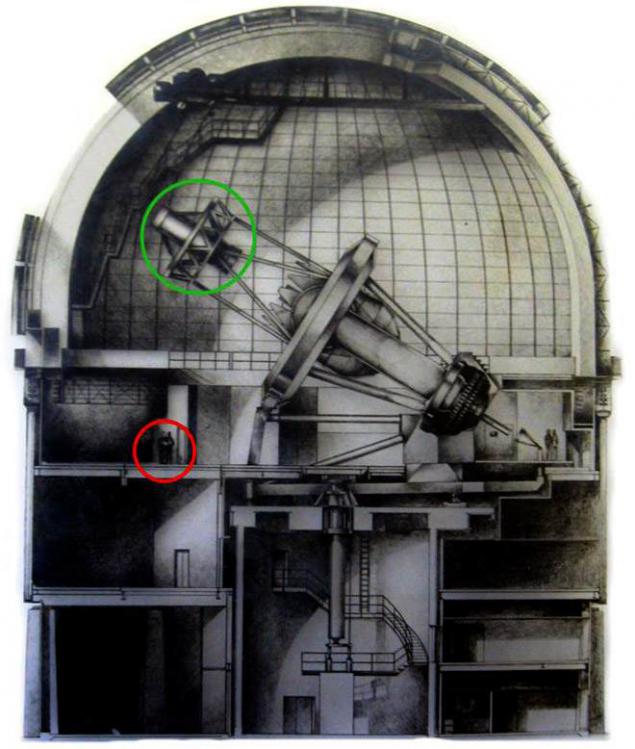
7. On the next picture shows, perhaps the biggest in the world and the aperture and shutter curtain. Two steel shutters hidden on the perimeter they are set in motion every time the camera takes a picture. Shutters moves too fast, because the stars need to shoot long exposures in 1-2 minutes.

8. The optical system of the camera is composed of five lenses, which must focus the image with a 4-meter telescope mirror. After installing the optics will be able to scan the area of the sky 20 times larger in area than the Moon takes.
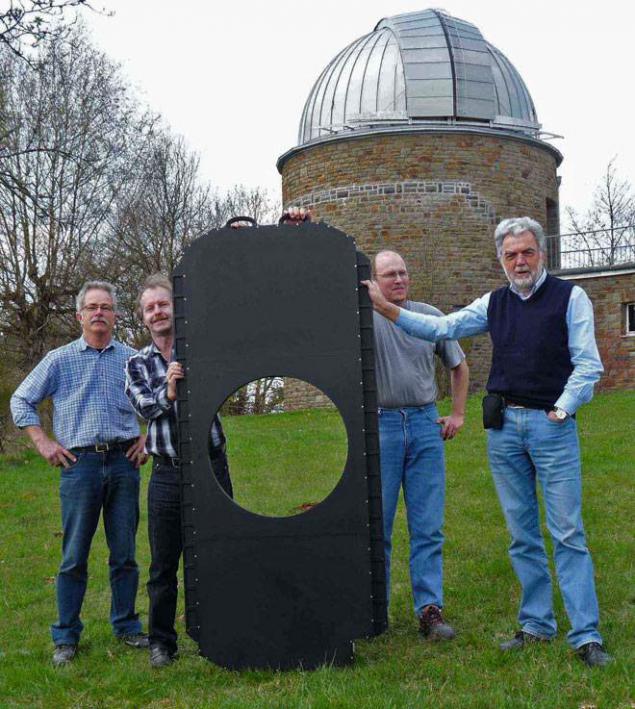
9. And here is homemade objective lens.
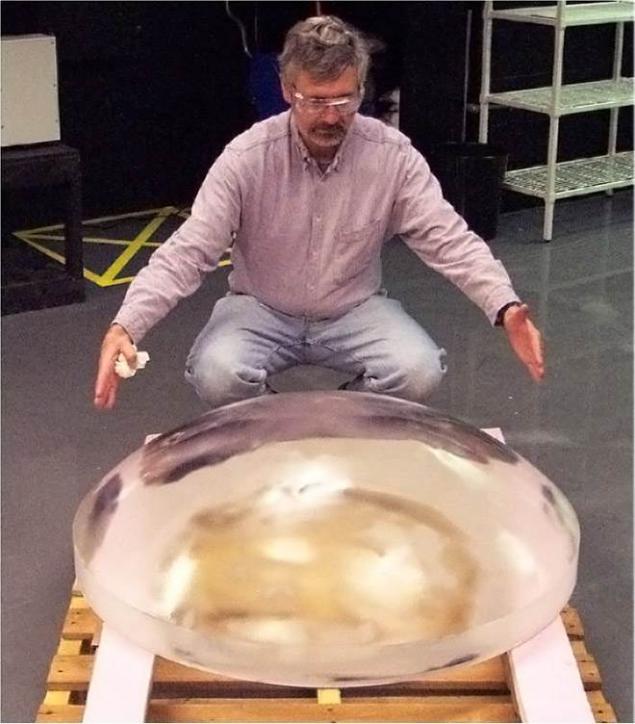
10. Testing chamber hoping to finish in February 2011.
Block capture images sent to Chile on a separate plane in June of 2011, everything else is the crossing of the New York ship cargo containers. After passing through the Panama Canal and unloaded on the coast of Chile, parts of the camera will be transported by truck to the mountains, where the observatory (approximately 360 km north of Santiago).

11. Telescope is central to the Observatory (a bright building in the center). The camera will take pictures of 525 nights in five years. Ideally, to be received conclusive evidence of whether or not dark matter, and correspond to Einstein's general relativity to describe gravity in the macro scale of the universe.
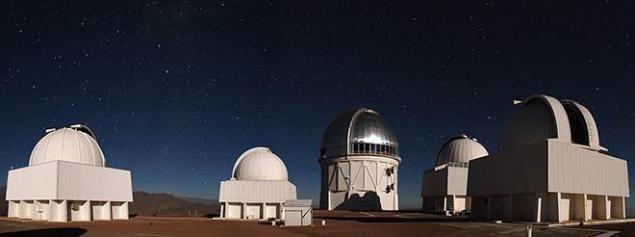
Source:
11 photos via alizar
Participants of the project are going to measure the rate of 300 million galaxies in the southern hemisphere night sky, to test the theory of the existence of dark matter.
Photo report directly to the construction site.
Assembling the camera is carried out since 2008 by the 120 astronomers, engineers and physicists.
Image capture unit (imager) holds 74 individual sensor combined resolution of 570 MP.
1. To date, there is only one camera with more resolution: telescope Pan-STARRS 1400 MP who seeks approaching Earth hazardous asteroids. But the Dark Energy Camera is unmatched by weight. Only one image capturing unit weighs about 910 kg.
Both "competitors" can easily confound the construction of the planned Large Synoptic Survey Telescope 3,200 MT, which also will be engaged in the search for traces (effects) of dark matter. The only problem is that its construction is no money.
The photo technician checks an array of 74 CCD sensors. Twelve of these sensors have a lower resolution (a total of about 53 MB), they are needed for targeting and focus the telescope. The remaining 62 of the sensor (519 MB) directly take pictures of galaxies.

2. All non-serial CCD sensors and are made by special order in accordance with the required characteristics - that they are the most sensitive in the infrared range (which is supposed to remove the offset and distant galaxies).

Approximately the image sensors give all together.
Every night, the camera will make about 400 full-size photos of each volume of 1 GB. From the substation in Chile, they will be immediately sent for processing and analysis in the National Supercomputer Center in Illinois (National Center for Supercomputer Applications in Illinois).

Heavy parts of the camera will not hang on the telescope. For them, the engineers built a separate 3, 4-meter-high "case." In the picture below you can see a block with sensors (on the left), the main focus optical system (right) and two of the six pnevmotrubok for aiming the camera.
4. Victor Blanco Telescope is located in one of the most advanced observatories in the southern hemisphere - the Inter-Tololo Observatory Cerro Chile. The diagram shows the scale of the telescope for two people (red circle) and position of the Dark Energy Camera (green circle).

5. Details of the heaviest in the world camera inspire respect. Before contact with the sensor light passes through the four filter width of 61 cm. They filter the range of passing waves to the sensors did not fall on anything extra. The infrared sensors will do, in fact, black-and-white picture. Then, scientists, artists will paint it realistically in different colors, using scientific methods (they are specifically calculated, what color is the most logical fit for the waves of a certain length).

6.

7. On the next picture shows, perhaps the biggest in the world and the aperture and shutter curtain. Two steel shutters hidden on the perimeter they are set in motion every time the camera takes a picture. Shutters moves too fast, because the stars need to shoot long exposures in 1-2 minutes.

8. The optical system of the camera is composed of five lenses, which must focus the image with a 4-meter telescope mirror. After installing the optics will be able to scan the area of the sky 20 times larger in area than the Moon takes.

9. And here is homemade objective lens.

10. Testing chamber hoping to finish in February 2011.
Block capture images sent to Chile on a separate plane in June of 2011, everything else is the crossing of the New York ship cargo containers. After passing through the Panama Canal and unloaded on the coast of Chile, parts of the camera will be transported by truck to the mountains, where the observatory (approximately 360 km north of Santiago).

11. Telescope is central to the Observatory (a bright building in the center). The camera will take pictures of 525 nights in five years. Ideally, to be received conclusive evidence of whether or not dark matter, and correspond to Einstein's general relativity to describe gravity in the macro scale of the universe.

Source:




